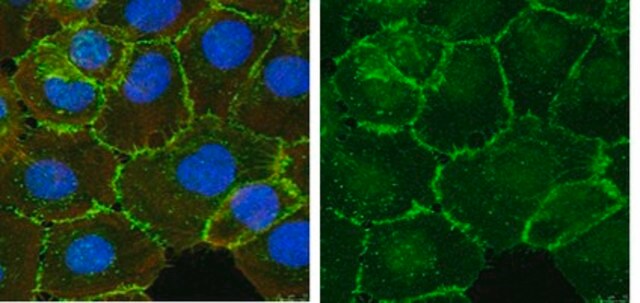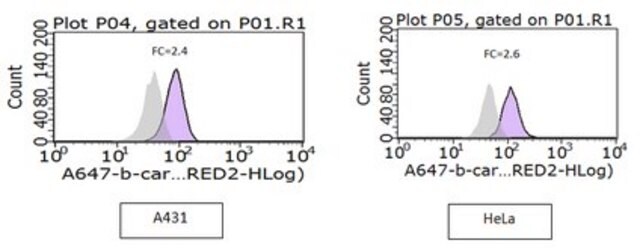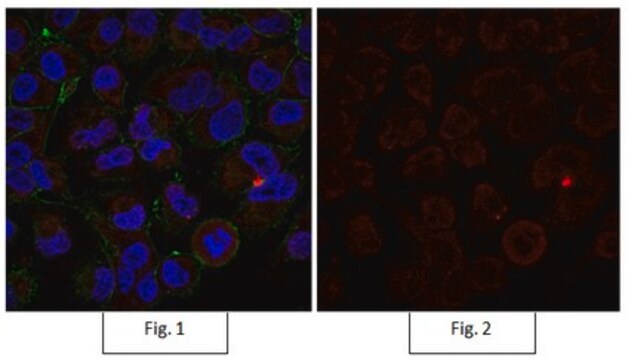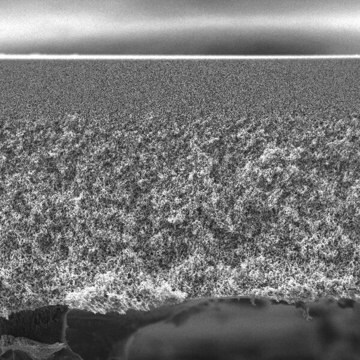05-665
Anti-Active-β-Catenin (Anti-ABC) Antibody, clone 8E7
clone 8E7, Upstate®, from mouse
Synonim(y):
Anti-Anti-CTNNB, Anti-Anti-EVR7, Anti-Anti-MRD19, Anti-Anti-NEDSDV, Anti-Anti-armadillo
About This Item
Polecane produkty
pochodzenie biologiczne
mouse
Poziom jakości
forma przeciwciała
purified immunoglobulin
rodzaj przeciwciała
primary antibodies
klon
8E7, monoclonal
reaktywność gatunkowa
human, rat, mouse
opakowanie
antibody small pack of 25 μg
producent / nazwa handlowa
Upstate®
metody
flow cytometry: suitable
immunocytochemistry: suitable
immunohistochemistry (formalin-fixed, paraffin-embedded sections): suitable
western blot: suitable
izotyp
IgG1κ
numer dostępu NCBI
numer dostępu UniProt
Warunki transportu
ambient
docelowa modyfikacja potranslacyjna
unmodified
informacje o genach
human ... CTNNB1(1499)
mouse ... Ctnnb1(12387)
rat ... Ctnnb1(84353)
Powiązane kategorie
Opis ogólny
When β-catenin was sequenced it was found to be a member of the armadillo family of proteins. These proteins have multiple copies of the so-called armadillo repeat domain which is specialized for protein-protein binding. An increase in β-catenin production has been noted in those people who have Basal Cell Carcinoma and leads to the increase in proliferation of related tumors. When β-catenin is not associated with cadherins and α-catenin, it can interact with other proteins such as Catenin Beta Interacting Protein 1 (ICAT) and adenomatosis polyposis coli (APC).
Recent evidence suggests that β-catenin plays an important role in various aspects of liver biology including liver development (both embryonic and postnatal), liver regeneration following partial hepatectomy. HGF-induced hepatpomegaly, liver zonation, and pathogenesis of liver cancer.
Specyficzność
Immunogen
Zastosowanie
This antibody has also been reported by an independent laboratory to show positive immunostaining for beta-catenin in LiCl-treated 293T cells fixed with methanol (Staal, Frank J. T., 2002).
Flow Cytometry: This antibody was used in flow cytometry at an optimal 1 μg/mL concentration.
Immunohistochemistry: This antibody was used in immunohistochemistry on a colorectal carcinoma tissue array at a 1:300 dilution.
This antibody has also been reported by an independent laboratory to detect beta-catenin in mouse embryo sections (Van Noort, M., 2002).
Epigenetics & Nuclear Function
Transcription Factors
Jakość
Western Blot Analysis: 0.2-2 µg/mL of this antibody detected β-catenin in RIPA lysates from A431 cells.
Opis wartości docelowych
Postać fizyczna
Przechowywanie i stabilność
Handling Recommendations: Upon receipt, and prior to removing the cap, centrifuge the vial and gently mix the solution.
Komentarz do analizy
Positive Antigen Control: Catalog #12-301, non-stimulated A431 cell lysate. Add 2.5µL of 2-mercaptoethanol/100µL of lysate and boil for 5 minutes to reduce the preparation. Load 20µg of reduced lysate per lane for minigels.
Informacje prawne
Oświadczenie o zrzeczeniu się odpowiedzialności
Nie możesz znaleźć właściwego produktu?
Wypróbuj nasz Narzędzie selektora produktów.
polecane
Kod klasy składowania
12 - Non Combustible Liquids
Klasa zagrożenia wodnego (WGK)
WGK 1
Temperatura zapłonu (°F)
Not applicable
Temperatura zapłonu (°C)
Not applicable
Certyfikaty analizy (CoA)
Poszukaj Certyfikaty analizy (CoA), wpisując numer partii/serii produktów. Numery serii i partii można znaleźć na etykiecie produktu po słowach „seria” lub „partia”.
Masz już ten produkt?
Dokumenty związane z niedawno zakupionymi produktami zostały zamieszczone w Bibliotece dokumentów.
Klienci oglądali również te produkty
Nasz zespół naukowców ma doświadczenie we wszystkich obszarach badań, w tym w naukach przyrodniczych, materiałoznawstwie, syntezie chemicznej, chromatografii, analityce i wielu innych dziedzinach.
Skontaktuj się z zespołem ds. pomocy technicznej









